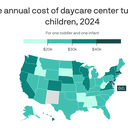'Mission: Impossible - The Final Reckoning' supposedly concludes the franchise. But is it really the end?

Skydance/Paramount Pictures
- "Mission: Impossible - The Final Reckoning" sees Tom Cruise's hero fight an evil AI known as the Entity.
- The story is packed with intense action sequences and leaves the door open for more installments.
- Is this really Tom Cruise's last movie in the "M:I" franchise?
Warning: Major spoilers ahead for "Mission: Impossible - The Final Reckoning."
"Mission: Impossible - The Final Reckoning" leaves the door open for future movies despite being a worthy sendoff for Tom Cruise's Ethan Hunt.
The sequel follows the agent as he races to save the world from the Entity, an evil AI that has taken control of every nuclear missile on the planet. He also has to fend off Gabriel (Esai Morales), an assassin from his past who wants to control the Entity for himself.
Ethan focuses on trying to disable the AI, and he's forced to retrieve its source code from the Sevastapol, the Russian submarine that sank at the start of 2023's "Mission: Impossible - Dead Reckoning."
Here's how it all plays out. Cue the theme music.
Ethan Hunt saves the world with seconds to spare in "Mission: Impossible - The Final Reckoning."

Skydance/Paramount Pictures
For audiences who are claustrophobic, a certain scene in "The Final Reckoning" will be a nightmare. Ethan's team discovers that the Sevastopol submarine wreck, which holds the Entity's source code, is at the bottom of the North Pacific, and transmits the location to Ethan, who is in a submarine with Captain Bledsoe (Tramell Tillman).
Ethan dives down to the wreck and eventually retrieves the source code after a painstakingly long sequence in which he has to navigate falling missiles and debris while the sub slowly floods.
The most intense moment sees him escape through a tiny missile tube and float to the surface. He actually drowns in his ascent, but luckily, Grace (Hayley Atwell) is waiting with the inflatable hyperbaric chamber that stops him from dying from decompression sickness.
After that, the gang heads to a secure digital bunker in South Africa, where the Entity is planning to wait out the impending nuclear apocalypse by combining its source code with a piece of tech called the "Poison Pill." This would isolate the AI into a single hard drive and avert the end of the world.
But before they can do so, Gabriel shows up to try to take the Entity for himself. He reveals a smaller nuclear bomb will go off if Ethan doesn't give him the Poison Pill. Predictably, the deal goes south, and Ethan chases Gabriel — even when the villain takes to the sky in a biplane.
Ethan climbs aboard a second plane piloted by Gabriel's henchman, and a jaw-dropping feat of aerial stuntwork ensues, as Ethan moves between the two planes in midair to retrieve the hard drive.
The film cranks up the tension during the climax because while the aerial chase is happening, Benji (Simon Pegg) gets shot and has to talk Grace through rebooting the digital bunker while their enemy-turned-ally Paris (Pom Klementieff) performs an emergency tracheotomy on him.
In true "Mission: Impossible" style, Ethan retrieves the Poison Pill at the last moment as Gabriel falls out of the plane and dies. To make matters worse, the plane catches fire, and Ethan has to leap out of the vehicle and put the source code into the Poison Pill while falling through the air, because nothing is ever easy in this franchise.
Obviously, he manages to pull it off, and Grace uses her quick reflexes to yank a glorified USB stick out of the console in the bunker to permanently trap the Entity. In the film's final moments, the IMF team meets up again in London as Grace gives Ethan the stick containing the Entity for safekeeping. They all share an emotional look at one another before going their separate ways.
That shot doesn't definitively end the franchise, and leaves the door open for the cast to return (should they choose to accept) for another mission.
But that's a little weird, since the film was billed to be an ending to the franchise. Here are the lingering questions we have about "The Final Reckoning" ending.
Was Ethan Hunt supposed to die at the end of "Mission: Impossible - The Final Reckoning?"

Paramount Pictures/YouTube
Our most pressing question is whether Ethan was originally supposed to die at the end of the film. During the climax on the burning biplane, Gabriel makes a point of telling the hero that he's wearing the only parachute before he falls out and is killed by the plane's fin.
The film perfectly sets up that Ethan might have to sacrifice himself in order to save the world. But no, there's a second parachute tucked away inside the plane that Ethan conveniently finds.
Considering "The Final Reckoning" has been billed as Cruise's swan song and the end of the franchise, it would have made sense for the hero to go out in a blaze of glory. But no, Hunt just puts the two together while falling through the sky and then lands on the ground as if it's just a normal day.
It's a shame, because killing him off would've given the story and its ending more weight.
Why was Luther Stickell hooked up to medical equipment in "The Final Reckoning"?

Giles Keyte/Paramount Pictures
Tech genius Luther Stickell (Ving Rhames) has helped Ethan as part of his team in every "Mission: Impossible" movie. During "The Final Reckoning," Ethan finds Luther in a base underneath King's Cross train station in London, where he develops the Poison Pill.
But during those scenes, it's heavily suggested that Luther may be dying of some kind of disease. He's hooked up to medical equipment, there's a hospital bed, and an IV drip — yet the film strangely never addresses this at all.
Instead, Stickell dies while defusing a bomb left by Gabriel.
Why does "The Final Reckoning" completely ignore Ilsa Faust's death in the previous film?

Skydance/Paramount Pictures
One of the most devastating moments in "Dead Reckoning" is when Gabriel murders Ilsa Faust (Rebecca Ferguson) in Venice. Isla was a mysterious MI6 agent with whom Ethan had a "will-they-won't-they" relationship.
Many fans assumed her death was a fakeout as part of a plan to trick the Entity, but Isla does not return in the final installment.
Even without bringing Ferguson's character back, it feels like a bizarre choice that the film does not even mention that Gabriel murdered someone Ethan was close with.
Did "The Final Reckoning" need to be that long?

Paramount Pictures
One of the most obvious questions is: Why did "The Final Reckoning" need to be two hours and 50 minutes long?
The first hour of the sequel is crammed with exposition about where the team is after the previous film, how the Entity has taken hold of the world's nuclear weapons, and why the authorities think Ethan might be working for the opposing side (he isn't).
It could have focused instead on setting up the concept of the Poison Pill and isolating the Entity in the South African bunker. It's understandable though; the early scenes put a variety of different locations from around the world on display and give "The Final Reckoning" the feel of a globe-trotting adventure. If only traveling all that way had led to a more a definitive ending.


